
Fine Homebuilding Project Guides
Framing
Trusted, in-depth guidance from the pros for framing a durable, code-compliant house
The frame of a house is a structural skeleton that defines the shape of the house and the layout of the rooms. As such, there's nothing more important to building a safe and sound structure than getting the framing right. In this comprehensive guide, pro framers share their years of on-the-job expertise, leading you every step of the way from framing floors and stairs to framing walls and roofs. The world of framing is rapidly evolving, and you'll find up-to-date information on new materials and new techniques, as well as the very latest developments in advanced framing.
Choose a Chapter
Search Guide-
Introduction to Framing
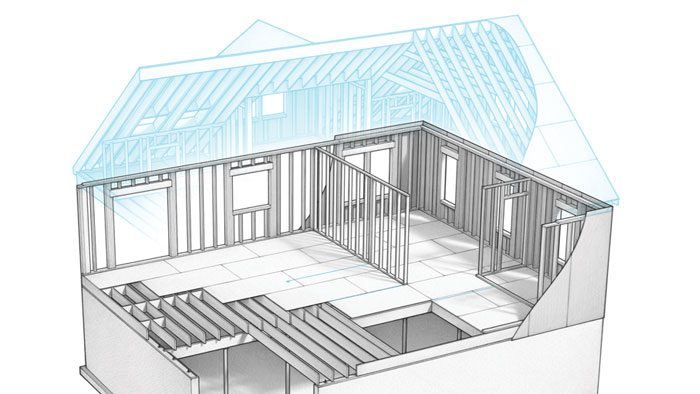
Let's start with a little background, including a short history of the house frame, a glossary of frame components, and a look at the various building loads that any house frame has to withstand. This introductory chapter also features an overview of some time-honored rules for framing from the pros, as well as pointers on avoiding common framing errors that building inspectors frequently encounter.
-
Framing Tools, Techniques, and Materials
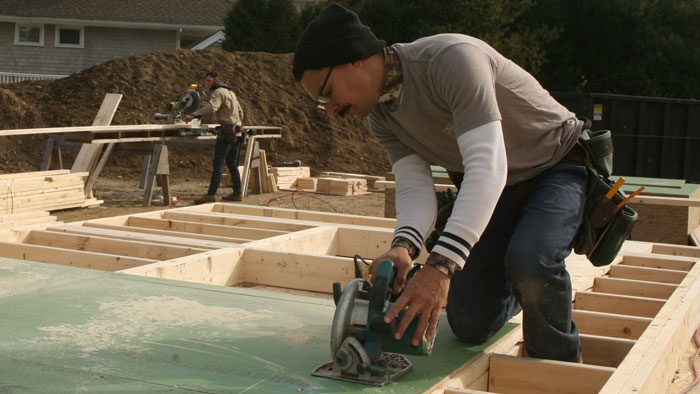
Most house frames are still made from wood, but new materials, such as engineered lumber and light-gauge steel, are making significant inroads. More sophisticated tools are also being introduced, including upgraded coil and stick framing nailers and a full range of circular saws from compact to supersized. In this chapter, we'll walk you through all the tools and materials you'll need, as well as highlight some key techniques that will make you a better framer.
-
Framing Floors
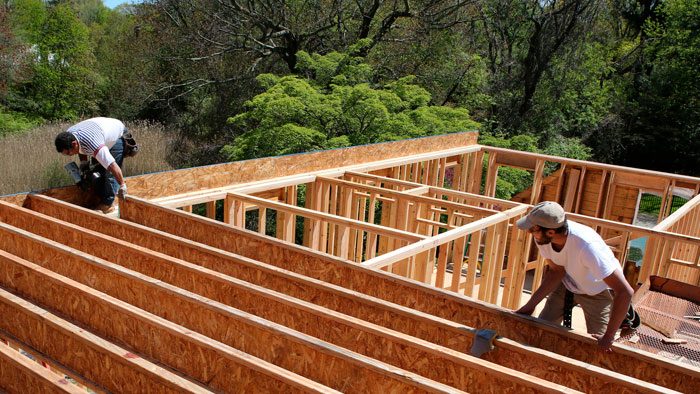
Now it's finally time to start framing, working our way up from the foundation, of course. It's critical to get the first-floor platform square and level, and we'll walk you through the whole process from layout through the installation of mudsills, support beams, floor joists, and sheathing. Nowadays, more and more pro framers are using engineered floor systems, and we'll assess the benefits of I-joist and LVLs. The chapter concludes with some tips on installing the subfloor, the layer of structural sheathing applied to the floor joists that provides a base for the finish floors.
-
Framing Walls
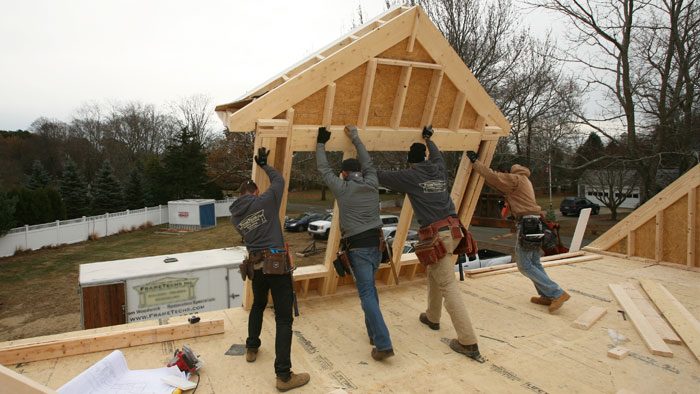
Wall framing is at the heart of the framing process, when you'll see the most dramatic changes as the house really starts to take shape. In this pivotal chapter, pro framers reveal their secrets for fast and accurate wall framing, with time-saving tips for laying out, assembling, and raising both bearing and nonbearing walls. They'll also explain how to lay out and frame rough openings, and conclude with some advice on the important, but often-overlooked, topic of blocking.
-
Framing Stairs
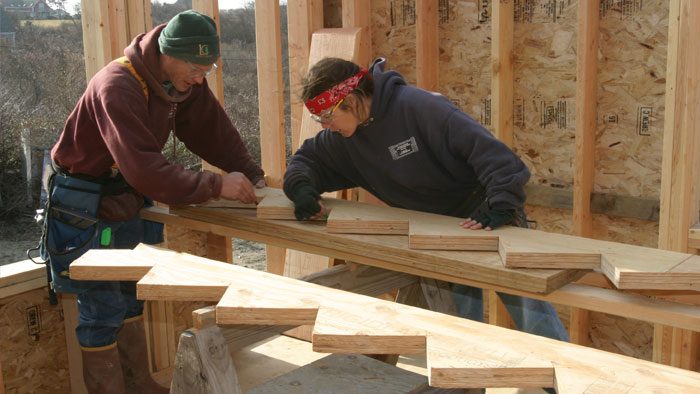
Stairs are a fact of life for any building with more than one story. Building them is not that difficult, but the challenge is in calculating the rise and run of the stairs. For that, you'll need some basic math. In this chapter, we'll walk you through the process of laying out the stair and then show you how to cut and install stringers, treads, and risers. You'll learn not only about framing a straight stair but also stairs with a landing or a three-step winder. Just remember, the rise and the run are key.
-
Framing Roofs
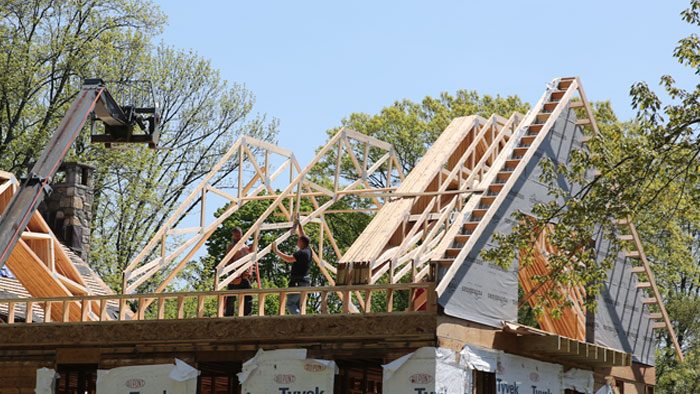
Framing a roof is one of the most challenging parts of building a house. On the one hand, roofs can be hard to visualize and lay out, and on the other they are often the most physically difficult part of the frame to build. Follow along with the pros as they take you through the whole process from design and layout to cutting and installing rafters, framing roof valleys, and installing sheathing. We'll look at stick framing as well as trusses, and include everything from working with simple gable roofs to more complex situations such as framing an octagonal roof.
-
Efficient Framing Methods
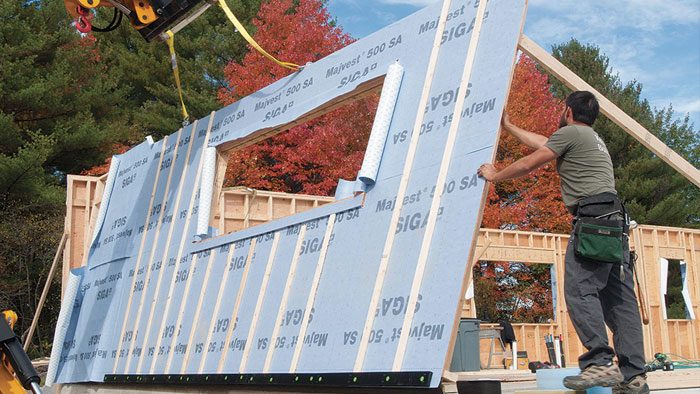
The 21st century is witnessing a sea change in the way we build houses. There's a growing awareness that traditional framing methods use materials inefficiently, and in response high-performance homes are being designed that minimize lumber use and maximize insulation. Builders are mastering techniques that make houses more energy efficient, using advanced framing to frame corners and headers with less material, stacking framing members vertically to simplify load paths, and building houses with double-stud walls. We'll explore all these efficient framing strategies as we look to the future in this penultimate chapter.
-
Timber Framing
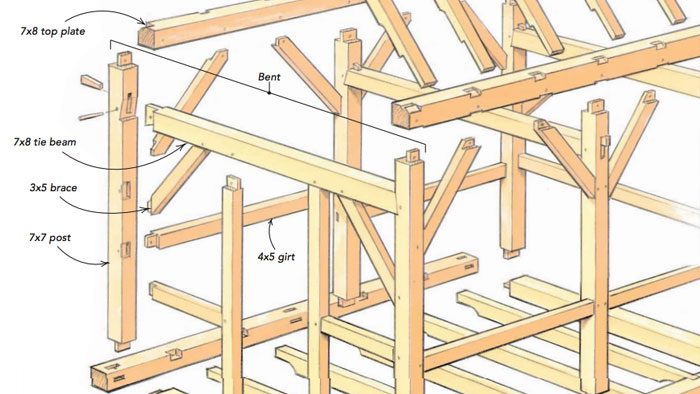
Timber framing is one of the oldest and most durable building techniques in North America. Long before stick framing, which has been the focus of this guide, houses were built with post-and-beam construction. In the past 40 years or so, there has been a significant revival of the craft, both using traditional tools and techniques as well as more recent hybrid strategies. We'll explore the classic pegged mortise-and-tenon joint, which is at the heart of timber framing, and also look at engineered frames built with modern machinery. We end the guide with a selection of captivating timber-framed homes.
- Home Group
- Antique Trader
- Arts & Crafts Homes
- Bank Note Reporter
- Cabin Life
- Cuisine at Home
- Fine Gardening
- Fine Woodworking
- Green Building Advisor
- Garden Gate
- Horticulture
- Keep Craft Alive
- Log Home Living
- Military Trader/Vehicles
- Numismatic News
- Numismaster
- Old Cars Weekly
- Old House Journal
- Period Homes
- Popular Woodworking
- Script
- ShopNotes
- Sports Collectors Digest
- Threads
- Timber Home Living
- Traditional Building
- Woodsmith
- World Coin News
- Writer's Digest




